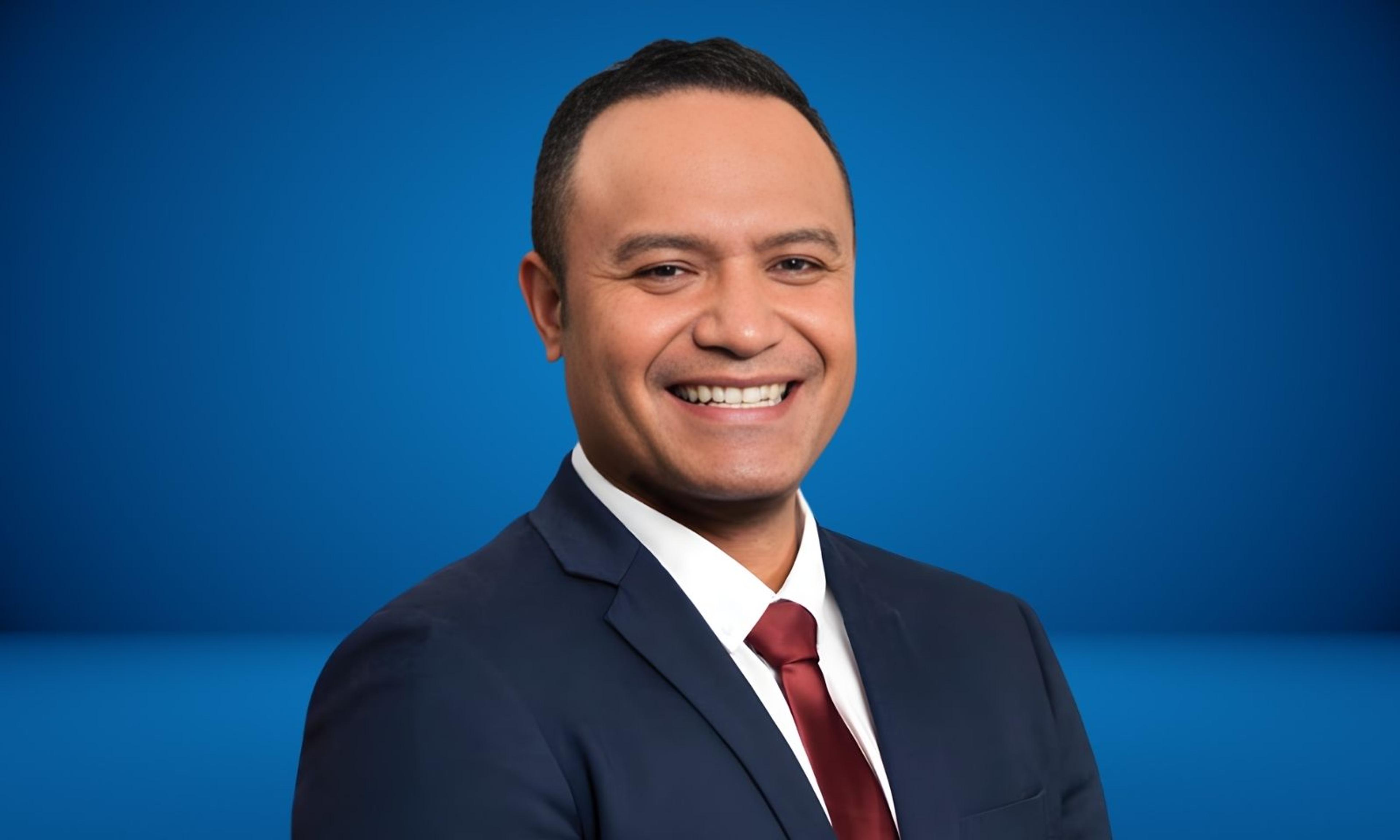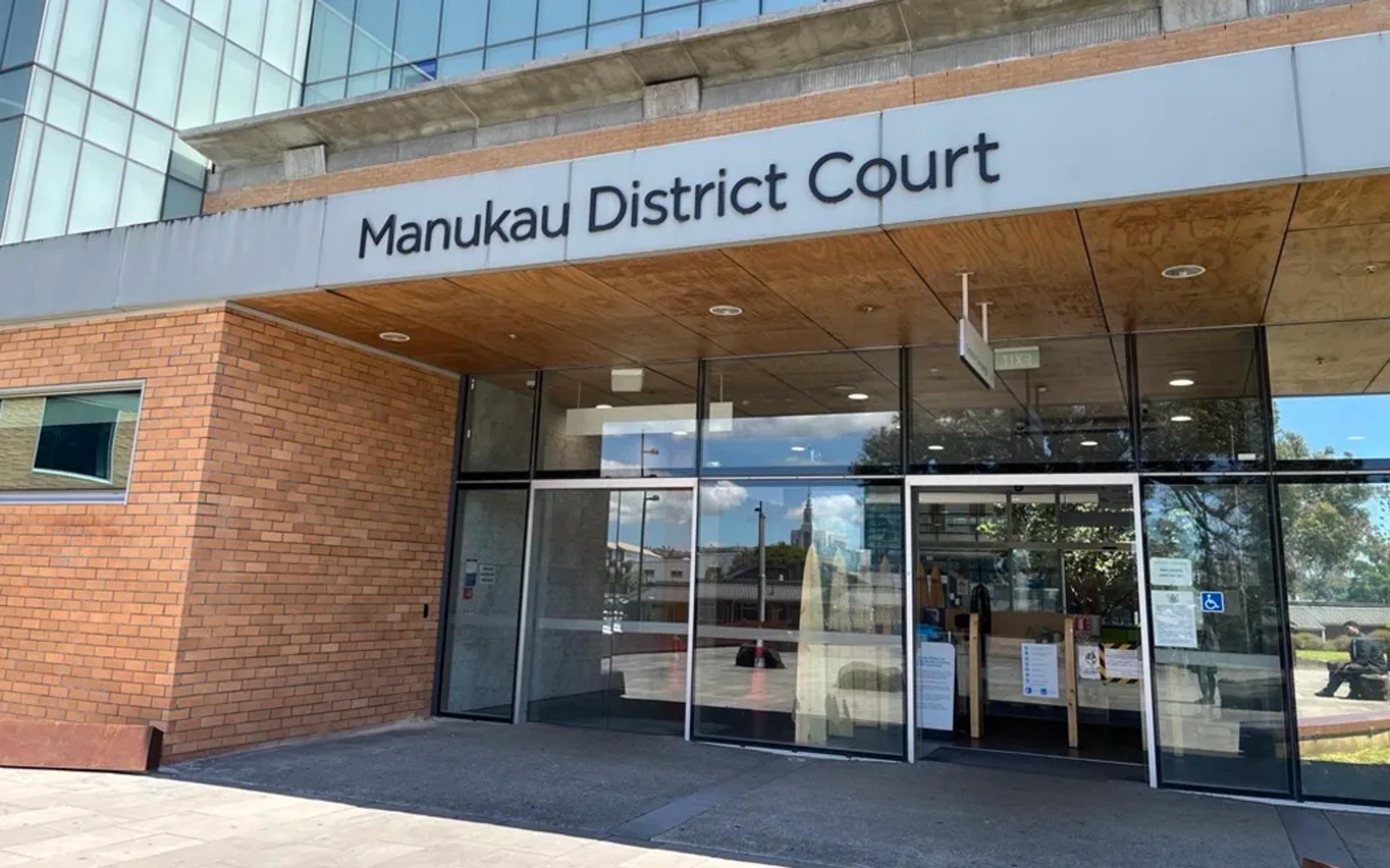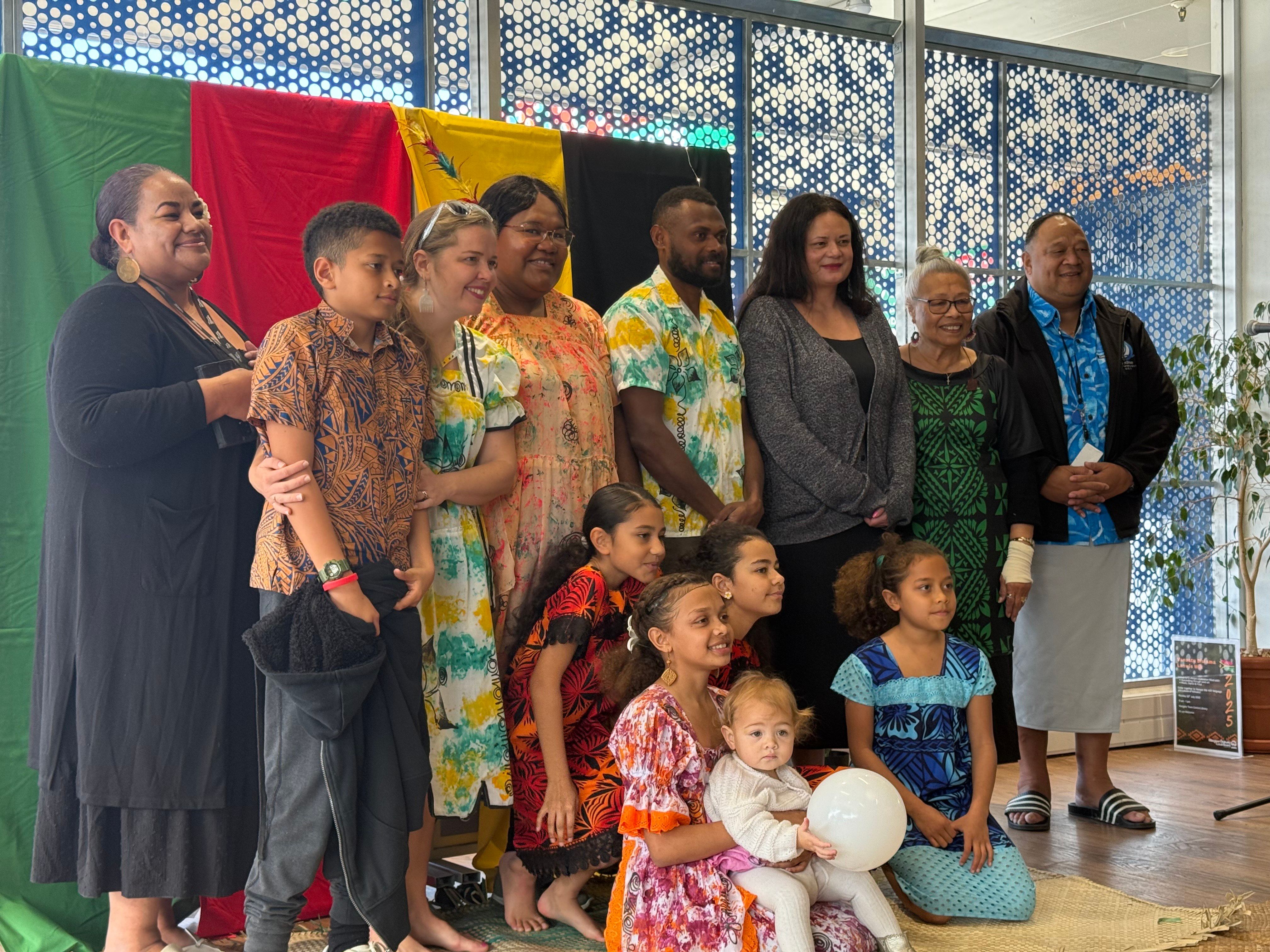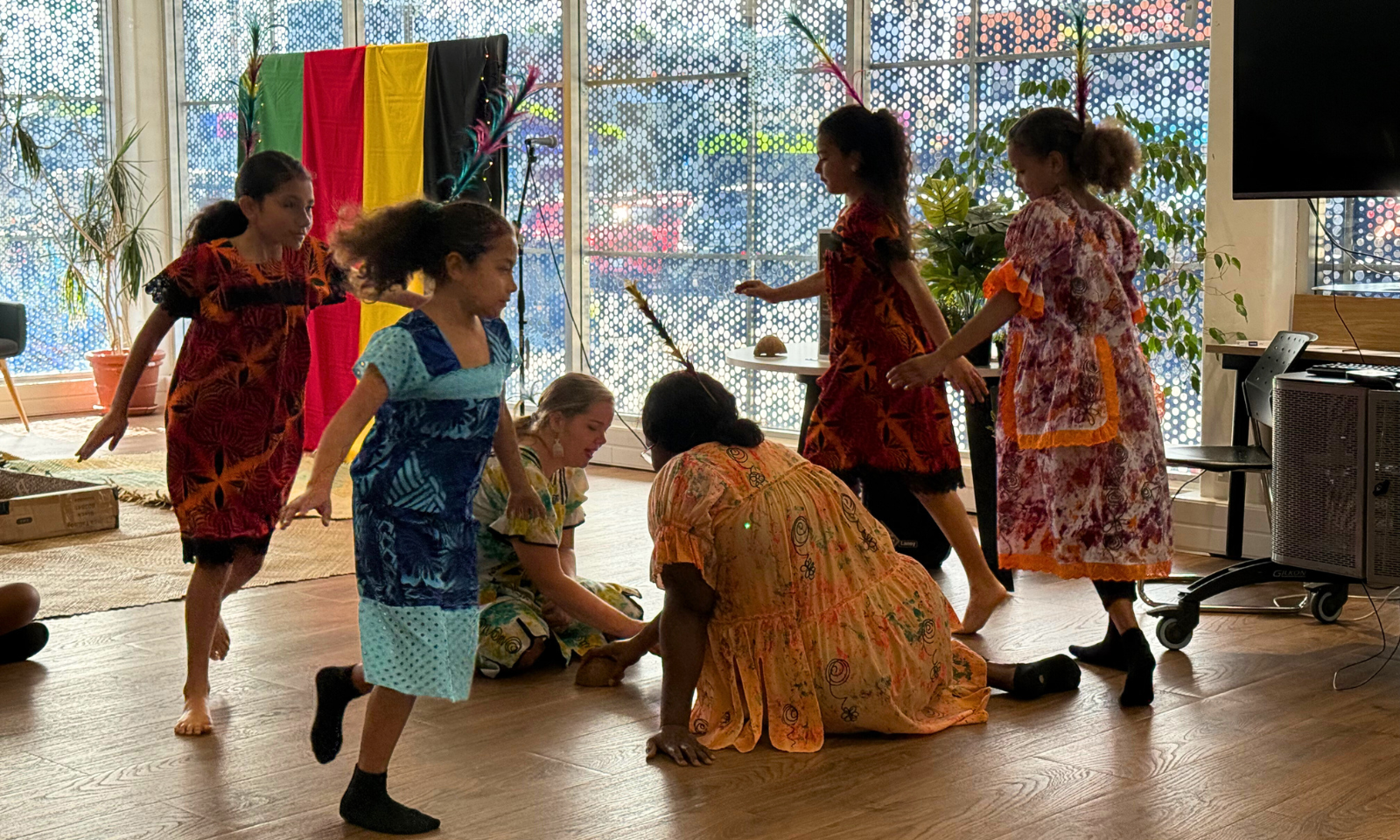

After two years of pilot events, Aotearoa now officially recognises Bislama Language Week.
Photo/Ministry for Pacific Peoples
'Better bond': Aotearoa welcomes Vanuatu Bislama Lanwis Wik
Auckland’s Ni-Vanuatu community celebrates the milestone with food, dance, and sand art.



‘A man so full of love’: Fepulea’i awarded comedy Topp Prize

Pacific health leaders warn cancer surge looms: ‘Early action cannot afford to wait’



US warns Fiji over human trafficking concerns linked to Grace Road Group

‘A man so full of love’: Fepulea’i awarded comedy Topp Prize

Pacific health leaders warn cancer surge looms: ‘Early action cannot afford to wait’

The first-ever Bislama Language Week has kicked off in bright colours, as Ni-Vanuatu communities proudly showcase their culture across Aotearoa New Zealand.
Bislama (pronounced bish-lama) is a pidgin language native to Vanuatu that has been widely spoken for many years, gaining official recognition in Aotearoa only recently. It is the most commonly-used language in schools, broadcasting, and on currency in Vanuatu.
A small group of Ni-Vanuatu residents based in Auckland launched the celebrations on Monday at the Māngere Town Centre Library, where they performed cultural dances, displayed sand art, and shared food.
Eric Lingbu from Auckland’s Vanuatu Community is coordinating a series of events across the city this week, aiming to highlight the cultures and traditions of his people.
“It’s a huge celebration for us, especially for our tiny Vanuatu community here in Auckland. We are so happy about the turnout here,” Linbu says.
The library was bustling with local students, teachers, and families from Bader Intermediate School, Viscount Primary School, Al Madinah School, Auckland Seventh-Day Adventist High School, and Māngere College.
Lingbu, accompanied by his wife and children, led activities that demonstrated traditional pastimes, history, and stories from Vanuatu.
Having raised his children speaking Bislama, he says it’s important to keep the language and culture alive within his family.
“That is the most important thing for this week, it’s for the kids, and they’re the reason why we’re here,” Lingbu says.
“Just paving the way for them to stay connected with the language, and that’s why we wanted to bring them to this occasion.”
Lingbu reflects on how the need for language preservation became clearer to him after relocating his young family to Aotearoa a few years ago.
“Growing up, I only thought about people speaking the same language as me because we came from the same island…But now I realise, language is why I exist.”
For Lingbu’s 13-year-old son, Ian, this week highlights how special it is to be from Vanuatu.
Although the Lingbus have moved to Aotearoa, Ian says he’s “really glad” Bislama plays a major role in their family life.
“Being unique, the culture, and some people say it is the ‘happiest place on Earth’,” Ian says. “I don’t really [say that], but I believe in it.
“We used to live in the islands and my parents would speak English at home. But at school, I would talk Vanuatu language. Here, I talk English, but at home I only speak in Vanuatu language.
“It’s helped me to bond better with my family. Some families have different cultures, but they don’t know how to speak their languages, and it’s really hard.”

Eric Lingbu (centre) with his family, members of the Auckland Vanuatu Community, and Māngere Town Centre Library Pacific staff. Photo/Atutahi Potaka-Dewes
Bislama Langwis Week is part of the 12 Pacific Language Week Series supported by the Ministry for Pacific Peoples, which also includes Fäeag Rotuạm, Gagana Sāmoa, Taetae ni Kiribati, Te Reo Māori Kūki ‘Airani, Lea Faka-Tonga, Papua Niugini Tok Pisin, Gana Tuvalu, Vosa VakaViti, Vagahau Niue, Gagana Tokelau, and Solomon Aelan Pijin.
The inaugural theme for 2025 is Tokabaot Klaemet Jenj - hemi ril mo yumi mas lukaotem laef, which translates to Talk about Climate Change - it is real, and we must look after life.
Minister for Pacific Peoples Dr Shane Reti encourages everyone in Aotearoa to celebrate Bislama Lanwis Week.
“It is great to have this new language in the Pacific language week series,” Reti states in a social media post.
Ian’s 11-year-old sister, Leile, is excited to share her heritage.
“I’m very happy because this is the first time I’ve ever gotten to show off my language.”
The group performed two traditional dances, one involving older women singing while seated and tapping coconut shells on the ground, as the young girls danced around them, imitating birds.
Members of the audience were invited to participate in a ‘follow-the-leader’ style dance, where the person in the middle acted as the bird leading the group.
“I want people to know that Vanuatu is a special place,” Leile says.
Vanuatu Bislama Language Week runs from 27 July to 2 August.

Ni-Vanuatu women and young girls perform traditional dance imitating birds. Photo/Atutahi Potaka-Dewes
At a glance
Vanuatu is an archipelago consisting of 83 islands, located some 2200km north of Aotearoa.
With over 113 distinct languages and even more dialects, many Ni-Vanuatu can communicate in multiple languages. With an estimated population of 335,723, Vanuatu is the most linguistically-diverse country in the world.
Many of the islands have been inhabited for thousands of years, and the oldest archaeological evidence dates back to 2000 BC.
In 1605, a Portuguese explorer named Pedro Fernández de Quirós became the first European to reach the islands, believing Vanuatu to be part of the hypothetical continent known as ‘Terra Australis Incognita’.
Early European settlers began to arrive during the 18th Century. James Cook made landings in 1774 and renamed the islands New Hebrides.
Bislama, a creole language, developed during the 1870s from Pidgin English, as Ni-Vanuatu were forced to work on plantations in Australia and Fiji. This pidgin English allowed for communication between the native populations and plantation owners, European traders, and settlers.
In 1887, the islands came under joint French-British administration. In 1906, the two powers established an Anglo-French Condominium over the New Hebrides. During World War II, Efate and Espiritu Santo served as military bases for the Allies.
The 1960s saw the Ni-Vanuatu pushing for self-governance, which eventually led to independence. Full sovereignty was achieved on 30 July 1980.
Vanuatu’s 1980 independence constitution recognises Bislama as a national language, alongside English and French.